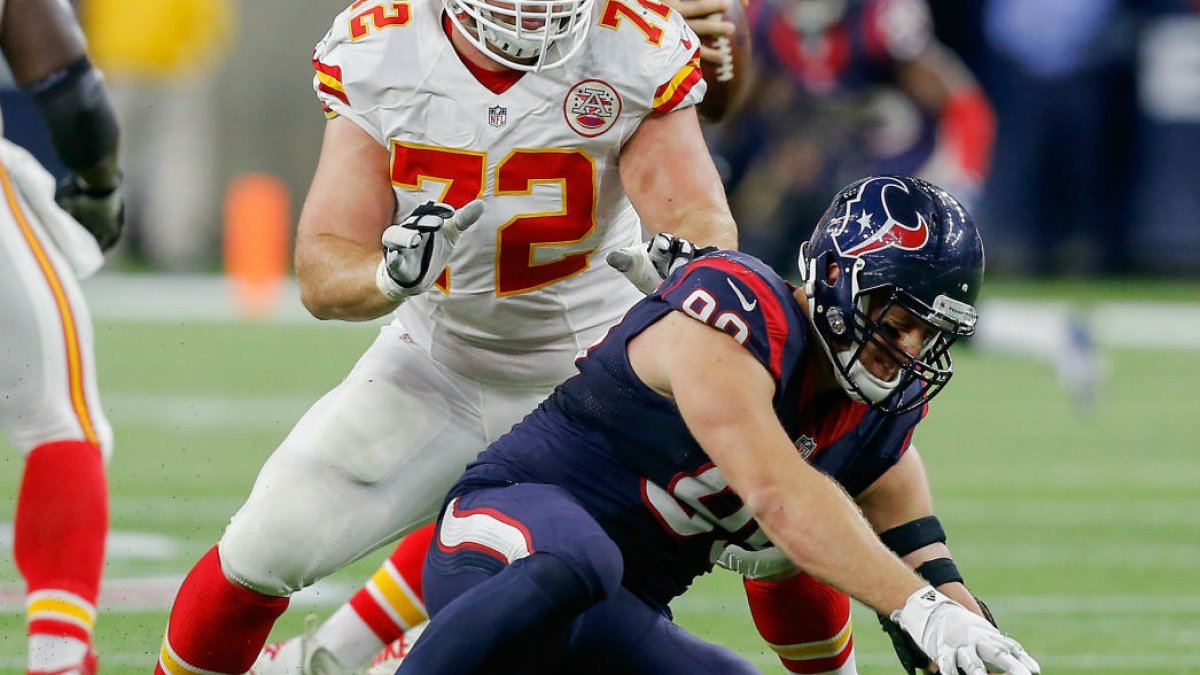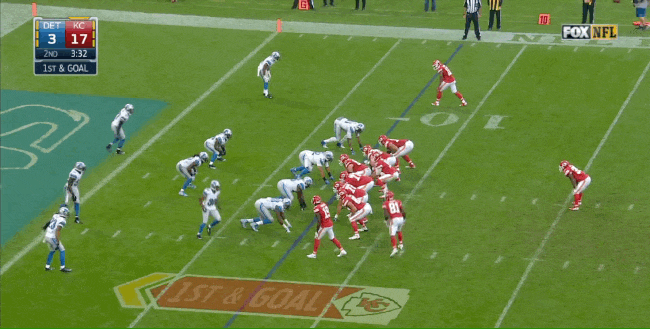Editor’s note: Every day in “Daily Focus,” PFF analysts take the latest NFL news and translate what it really means for each team involved.
Is Chiefs offensive tackle Eric Fisher really on the incline? That’s certainly what the former No. 1 overall pick of the draft thinks, following his comments to the team's website, and the PFF grading backs him up in that assertion. But the question we have is whether his modest improvements through his first three seasons will be enough.
Over Fisher's first two seasons in the league, he graded very poorly and surrendered seven sacks in each of those years. He was ranked in the 70s just among tackles league-wide, and when you consider there are only 64 starting tackles in the league, that’s obviously not a good thing for a player who was drafted first overall by the Chiefs back in 2013.
This past season, though, we did see signs of something different. Fisher didn’t exactly become an all-pro, but there were strong games, including two perfect outings in pass protection and 13 games including the playoffs during which he didn’t allow his QB to hit the turf.
On this play against the Lions, he showed his ability to drive his opponent off the ball and create a crease for his running back:
The issue is that there is still a long way to go from that level to where he needs to be in order to justify his draft position — or to simply being a good starting left tackle at the NFL level.
He finished the 2015 season as PFF’s No. 36 tackle, and it would take a similar improvement in performance to get him to the level of decent starter, let alone to challenging the better players at his position.
The Chiefs at least are on board with the idea that it’s possible. They have exercised his fifth-year option to keep him around and see where this improvement takes him, and tackle is certainly a position that has proven far less safe in the draft than conventional wisdom would suggest.
You only need to look at Fisher's class of 2013 to see what we mean. It was supposed to be a strong year for tackle prospects, and five of them went in the first 20 picks of the draft, including Fisher at No. 1. Of those five, two — Chargers' No. 11 pick D.J. Fluker and Giants' No. 19 pick Justin Pugh — have already been moved to guard, Jaguars' No. 2 pick Luke Joeckel has been consistently poor, and only Eagles No. 4 pick Lane Johnson has shown any kind of consistent stretch of excellent play at tackle, and he has a suspension for PEDs on his record.
Developing a good tackle can take time, and while guys like Cleveland's Joe Thomas and Dallas' Tyron Smith can come in and dominate right away, they set unrealistic expectations for everybody else. Fisher has shown that he can be a quality player, and not just in flashes within games, but over complete weeks of action. The next step is to turn those single-game bright spots into consistent runs of strong performances and then ultimately into his baseline of play. Those are two big steps that are by no means easy to achieve, but they are necessary if he is to become the player he hopes to be.
What do the PFF grades say about the six supplemental draft prospects? Former Ole Miss CB Tee Shepard, Virginia Tech long snapper Eddie D’Antuono, Sam Houston State RB Jalen Overstreet, Concordia DE Cameron Walton, WR Rashaun Simonise of Calgary, Canada and Purdue DT Ra’Zahn Howard are the players eligible for the supplemental draft this year. And as with most years, they make up a pretty obscure bunch.
Purdue’s Howard is a player whom PFF has seen a decent amount of, with 881 snaps over the past two seasons for the Boilermakers, and two straight years of good grades against both the run and the pass. His play was better in 2014 when he was playing 66.8 percent of the team’s defensive snaps, and not quite as impressive this past season when that playing time was cut to just 36.2 percent before leaving the program for academic reasons.
Howard is a big, athletic player who has the ability to make an impact and should find himself taken in the supplemental draft, which is the ultimate goal for a process that often sees no players selected at all. Howard is somebody with the ability to tempt teams into parting with a 2017 draft choice.
Is Steelers RB Le'Veon Bell worth $15 million per year? That's what the Pittsburgh star is looking to get paid — at least according to the song that debuted on his Twitter, so we'll have to wait to see how serious he is about that demand. That seems like pie-in-the-sky thinking for a running back in today’s league, but a healthy Bell is the best back in the game, so if anybody can shoot for it, it’s him.
(PFF Fantasy Insight: One of the PFF Fantasy analysts makes the case that Bell should be the No. 1 overall pick in fantasy drafts this season. He is our unanimous No. 1 fantasy running back in our rankings.)
Vikings RB Adrian Peterson’s contract averages $14 million a year, and the salary cap and annual averages have gone up significantly since that time. Bell may not have the overall reputation that Peterson did, but he is a far more complete back than Peterson has ever been, with an array of skills that can keep him on the field for all three downs.
Peterson’s contract remains an outlier, and no RB to sign a deal in recent years has come close to those figures, but it’s not a crazy place to start negotiations for Bell.



 © 2024 PFF - all rights reserved.
© 2024 PFF - all rights reserved.